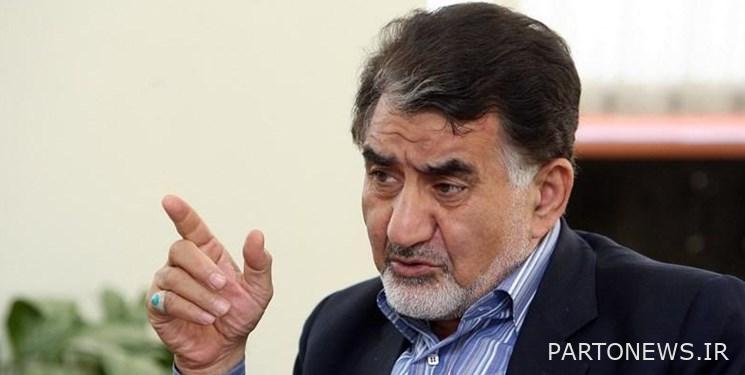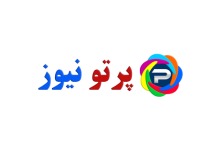Iran is stable; 44 years of honor Pahlavi did not believe in national production and people’s economy/ all the country’s resources before the revolution were at the disposal of 1000 families

According to the economic correspondent of Fars News Agency, one of the prominent features of the Islamic Revolution is the effective role of the people in governance. In the popular economy, the people have the main say and domestic production is considered as the axis of the country’s development plans. But during the Pahlavi rule, the people and national production did not play a role due to the Shah’s unusual behavior in the economy and government.
Al-Ishaq, an economic activist and one of the managers of different eras of the Islamic Republic, says about the economic roots of the downfall of the Shah: the high oil revenues, instead of being spent on development and infrastructure issues and issues related to economic growth, are spent on the expenses and spending of the Shah and It was a court. They opened the country’s doors many times and all kinds of manufactured goods entered the country. The huge amount of money that was injected into the country, without any production taking place in the economy, which ultimately caused inflation; Contrary to the mentality that the welfare of the people increased during the Pahlavi period, the Dutch disease became the main complication of the economy, this inflation also affected all economic and social issues and became a major complication for the economy of the Pahlavi period, and finally all economic indicators were under inflation. Economically, they faced problems.
In the following, you will read Fars’ conversation with Yahya Al Ishaq:
Fars: As a first question, to what extent was the downfall of the Shah related to the economic performance of the Pahlavi era?
Al Ishaq: The factors of the Shah’s downfall cannot be discussed in one area. The set of governance factors and scandals in the political, social, cultural, economic, international relations and other set of issues in governance caused the downfall of the Shah. That is, the governance system became such that the king had to leave the country. All these factors caused the Pahlavi family to prefer to escape when the country reached a deadlock and fled.
* 90% of the economy was owned by 20% of the society
Fars: Which economic reasons can be introduced among the main issues in the context of the fall of the Shah?
Al Ishaq: Especially in the economic field, major reasons can be identified for the collapse of the Pahlavi government. But there are a few things that can be said, first of all, the situation of class differences in the field of economy. That is, the whole country was almost divided into two poles with a huge gap. That is, over 80% of the people were on one side of the country’s economy, who owned less than 10% of the economy, and 20% of the people owned the entire 90% of the economy. This deep gap made sense in different fields.
More than 70% of the country’s population lived in villages and lived in very poor conditions. Some of these areas, after the revolution, their awful situation became clear, such as Beshagard and areas in Kerman and Sistan and Baluchistan that did not have basic economic and welfare issues. 70% of the country was living in a very basic and basic condition. On the contrary, all the resources of the country were at the disposal of 1000 families and a minority depended on the court and the king and his sisters. Corruption was at its highest level. There is corruption in government systems all over the world. But the degree, dose and type of corruption in the Pahlavi period was such that it was the dawn of the sun. In all situations and wherever there was a smell of economic interests, the traces of the court could be seen in it.
* The corruption of the king and courtiers was very widespread
Fars: In the 1940s and 1950s, the country’s oil revenues grew strongly, why did the situation of the 80% of the lower class not improve?
Al Ishaq: In the 1940s and 1950s, when the price of oil rose, a huge amount of income was created for the country, and under the name of transactions related to military issues and huge military purchases, and with huge bribes that were revealed later, these revenues went to the pockets of the Shah and his entourage. went “Tofanian” was a deal broker and was able to acquire billions of dollars under the name of basic and military goods deals. Many military goods were never delivered to Iran. So the issue of corruption in various spheres, by the Shah and his family and Ashraf and others who were around him, was very widespread. Economic corruption was accompanied by moral corruption, and it is better not to say anything about it. Shiraz Culture Festival was a clear example of excess and corruption.
* Dutch disease, the main complication of the increase in oil revenues during the Pahlavi period
Fars: So the huge oil revenues in the last years of Pahlavi’s rule did not lead to economic growth?
Al Ishaq: The high oil revenues, instead of being spent on development and infrastructure issues and issues related to economic growth, were spent on the expenses and spending of the king and the court. They opened the doors of the country and all kinds of manufactured goods entered the country. The huge amount of money that was injected into the country, without any production in the economy, eventually caused inflation. Contrary to the mentality that people’s welfare has increased, the Dutch disease became the main complication of the economy. This inflation affected all economic and social issues like an avalanche and became a big problem for the economy, and finally all economic indicators faced problems due to economic inflation.
* The king did not attach importance to domestic production/ the entire domestic production of Pikan was only the upholstery of his chair
Fars: What was the state of domestic production during the Pahlavi period and did this volume of oil revenues lead to the growth of national production?
Al Ishaq: None of the developments that were made in the country were infrastructure. For example, they brought the arrow. But all the bolts and nuts were inserted, and it was only assembled here. That is, the assembly was complete. What was mentioned about the production of the inside of the arrow was its embroidery. It means that the arrow was assembled from the beginning to the end. The Shah did not believe in domestic production at all and only sought to create glamor for the appearance of the court and society.
Another thing that hit the economy hard was the currency reform, which eventually led to mass migrations from the villages to the cities. One of the main reasons for this issue was the supply of cheap labor for assembly industries. In this situation, domestic agriculture also faced serious problems. The situation of the farmers reached the point where they came to the cities, and ultimately both social and cultural complications and moral issues were the result of these apparently economic reforms. In the field of international relations, the king’s ruling system and his decisions were the same. That is, the oil revenues that were created for Iran, the West found a way to return this money to themselves. Their solution was to turn the king into a regional gendarme and sell military weapons to achieve this goal.
* During the Pahlavi era, oil revenues were used to import consumer goods
Fars: According to what was said, did domestic production have a place in the Shah’s economic plans during the Pahlavi period?
Al Ishaq: no Shah did not care at all about domestic production and people in the field of economy. He said that because we have a high oil income, everything I say should be implemented. For example, if the king wanted to give importance to domestic production, he should have created the infrastructure for growth and development. That is, basic factories in various fields of steel and medicine, road and road infrastructures, education and technology should have been expanded. But he did not do any of the things that should be done to support domestic production. Pahlavi should have done what Amir Kabir did with his one-year rule.
With the huge facilities he had and the population that was not even half of the current population, as well as with the revenues from oil, the Shah should have developed mines and road infrastructure, developed ports, and developed technical and professional education. was giving It did none of these things. The Shah just spent the oil money on consumption like a rich kid who doesn’t know how to spend.
* Oil revenues turned the Shah into a full-fledged dictator
Fars: Many courtiers narrate in their memoirs that Mohammad Reza Shah became a dictator during the years when he had huge oil revenues and did not accept any economic plan. Can you give an example in this regard?
Al Ishaq: The oil revenues turned the Shah into a complete dictator to take over all the country’s facilities for himself and his subjects. On the other hand, he was 100% subordinate to external commanders. The Shah was completely subject to the orders of America and the determined policies of this country. Even for investment, the Americans dictated to him where to invest and where not to invest. Therefore, the direction of the country’s economy was formed based on the interests of the outsiders, not the interests of the country. America wanted only a consumer country. In investment matters, they emphasized more on consumer industries and not on infrastructure matters. The country had become an importer, importing all goods from abroad.
* Turning Iran into a protector of the West against the Eastern Bloc
Fars: Was the economy guided by a specific model during the Pahlavi period?
Al Ishaq: Finally, the direction and economic model that ruled Iran’s economy was the model that they had drawn. The economy was organized based on their design. Their design was also clear on what axis it would be based on. They had determined that a part of Iran’s income and basically Iran’s economic plan should be to deal with the Eastern Bloc. That is, Iran, on behalf of the Westerners, should have established supervision and control in the region so that the Eastern Bloc does not expand. That is, the country’s money and revenues, which should have been spent on Iran’s economic development, were spent to form a shield for the West against the East. That is, Iran’s economic model was ultimately the model that Westerners wanted. During this period, Iran had become an importing and dependent country.
* Production of cheap fuel is a task given to the king by the West
Fars: Why did the Westerners insist on keeping the price of oil low during this period?
Al Ishaq: One of the tasks that the westerners had drawn for Iran in the world order was the issue of producing cheap fuel for their development. That is, our task was to provide fuel to the western world at the lowest cost. In this period, according to the statistics, the lowest amount of investment was made in the oil sector and we lost the most resources in this period. In all spheres, we were an agent and responsible person without duty, we were just carrying out their orders. Therefore, we can see that in that period, the least amount of investments were made inside the country in terms of infrastructure. That is, all the capital of our country was in the hands of a few people inside, who also listened to the orders of the Westerners. Iranians in our own country had become second-class citizens in front of the American advisers. A military officer with the rank of colonel had to serve an American garrison. That is, the Americans were destroying the identity of Iranians. This issue was also one of the reasons for the Iranian revolution in 1957.
* The king and the court were the servants of the Americans
Fars: Does that mean the king and the courtiers were carrying out the orders of the westerners without having the power to make decisions? How far did this issue continue in the field of economics?
Al Ishaq: Yes. The king and the courtiers were free servants of Americans and Westerners. Each of the king’s entourage has been serving one of the western countries. Iranians, with an age of more than 3000 years, could not bear this burden. The country’s economy was also being destroyed. Examining the economic variables in that period shows that people were in a deplorable situation and this problem also made them unable to bear the existing situation. When Imam (RA) took the field and showed courage, he was able to bring all the groups under his umbrella. Imam’s order to the people was to gather that the rotten root of the Pahlavi is rotten and shake it a little so that the root is pulled out. That’s it, the Americans did not expect this revolution and they did their best to prevent the revolution from winning. After the revolution, they realized that a change had taken place in the region. Iran is located in a region that is the energy hub of the world and the Middle East is the heart of the planet. The Islamic Republic of Iran is the center of this hub. From the years before Pahlavi’s rule, all powerful countries sought to make Iran lean towards them. But today, a strong Iran has become a country that has something to say in all fields.
Fars: Thank you for taking the time to do this interview.
Al Ishaq: Thank you and Fars news agency for paying special attention to the economy before the Islamic revolution and after the revolution.
end of message/

